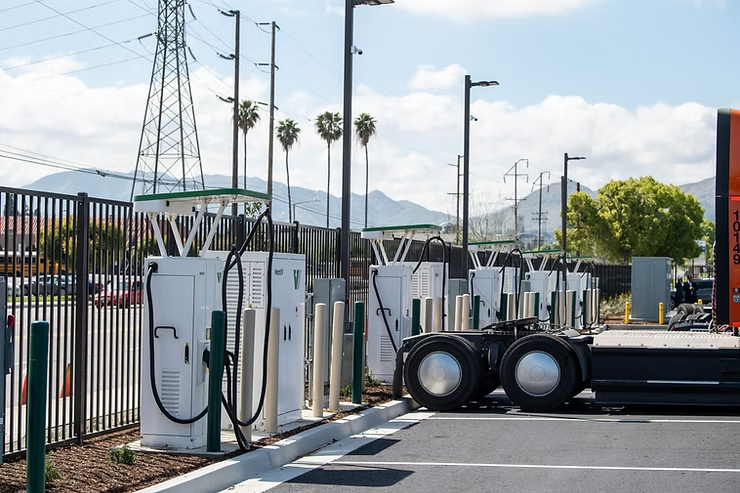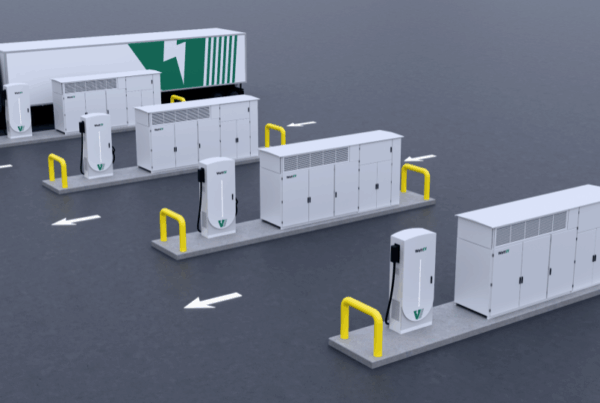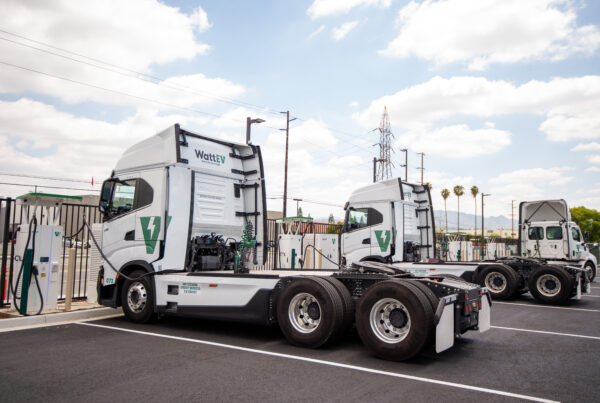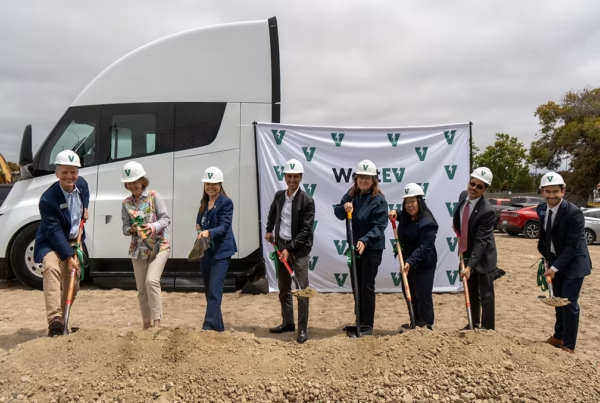LONG BEACH, CA (April 15, 2024) – WattEV, one of the nation’s leading commercial-truck charging infrastructure developers, has opened a second charging station for electric heavy-duty trucks, this one in San Bernardino, the heart of California’s Inland Empire.
The first heavy-duty electric truck charging depot was opened by WattEV at the Port of Long Beach in July 2023. A third, solar-powered charging depot is scheduled to open May 6 in Bakersfield.
At a grand opening ceremony April 15 attended by key industry, government and environmental partners and stakeholders, WattEV co-founder and CEO Salim Youssefzadeh noted that this is the second site WattEV has opened within a year, an unprecedented achieve, but one that he said would “be a regular occurrence” for the company.
“San Bernardino is a crucial site in our network,” said Youssefzadeh, “as it connects many of the freight corridors that originate from the ports to the Inland Empire, as well as much of the freight that travels from distribution center to distribution center in the middle mile.”
Branded simply as “WattEV,” the depot is located directly adjacent to the busy freight corridors of I-10 to Arizona as well as I-15 to Nevada. The site is four acres in size will initially will host 12 dual cord CCS 360 kW chargers with the ability to charge 24 trucks at once. The typical charging time of current heavy-duty electric trucks is two to three hours. As the number of electric trucks grows, the site is designed to expand as well, adding Megawatt Charging that will allow for faster changing as the trucks.
Partners that helped get WattEV’s San Bernardino charging depot active included Southern California Edison, the local utility that energized the site, and Southern California Association of Governments, that funded a demonstration program for freight movement with 20 trucks that will shuttle between WattEV’s San Bernardino site and one it has in Gardena.
In addition, California Air Resources Board and the Carl Moyer program provided additional funding towards the San Bernardino site’s buildout. Youssefzadeh also thanked the cities of San Bernardino and Riverside for their cooperation in bringing the project to fruition.
WattEV now has a total of 10 MW of charging power in aggregate at its charging sites in Long Beach, Gardena and San Bernardino, enough to power more than 50 trucks per hour.
“This site was made predominantly as a leasing facility to help owner-operators transition to electric drive trucks,” Youssefzadeh added. “With our Truck-as-a-Service (TaaS) program, we can help owner-operators make a seamless transition on routes we have already tested with brand-name shipper. This helps them continue doing what they do best—driving a semi rig with all the same benefits of an EV.”
WattEV’s TaaS program provides fleets or individual operators access to Class 8 battery-electric trucks, reliable maintenance support, insurance and charging across WattEV’s network, all at a total cost of operation that is on part with diesel trucks.
About WattEV
WattEV’s mission is to accelerate the transition of U.S. trucking transport to zero emissions. It uses a combination of business and technology innovations to create charging infrastructure and data-driven workflow that provide truckers and fleet operators the lowest total cost of ownership. WattEV’s goal is to get 12,000 heavy-duty electric trucks on California roads by the end of 2030, exceeding existing forecasts. More information is available online at www.WattEV.com.




